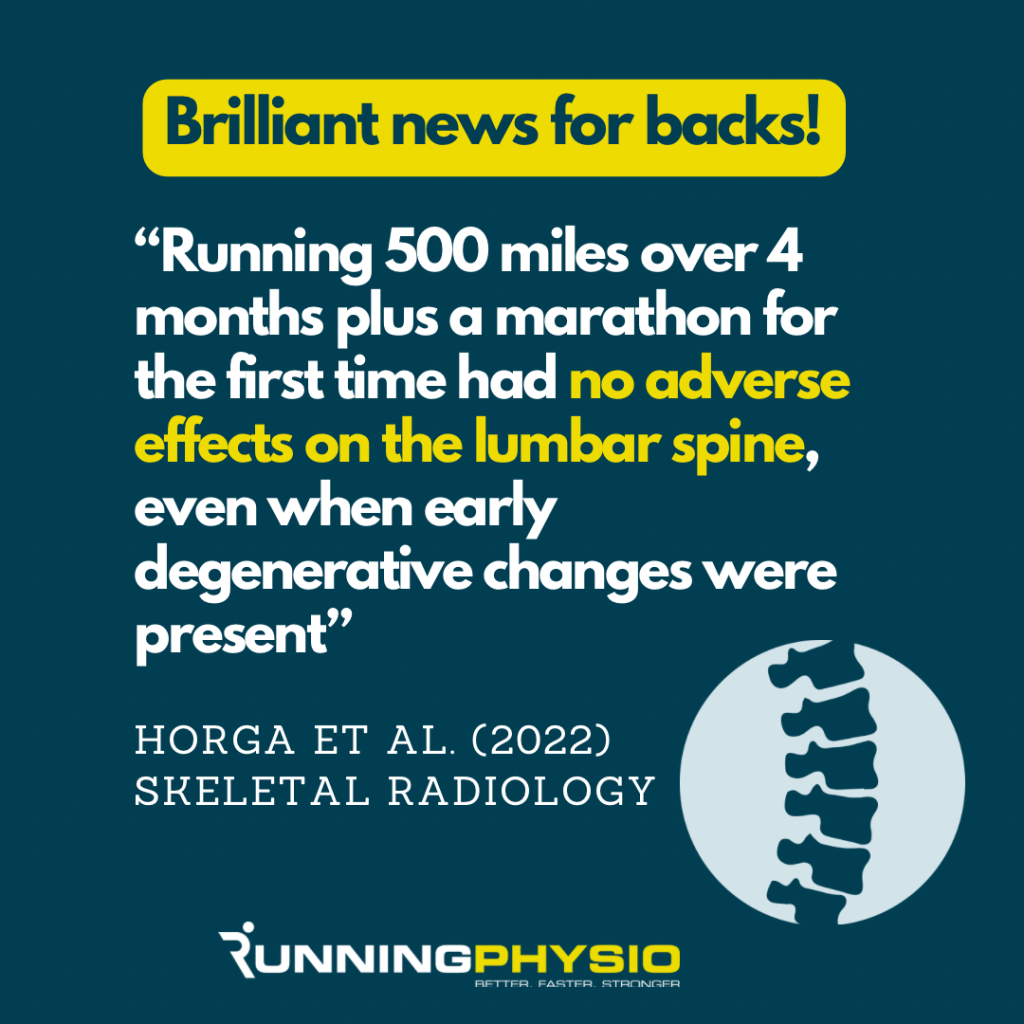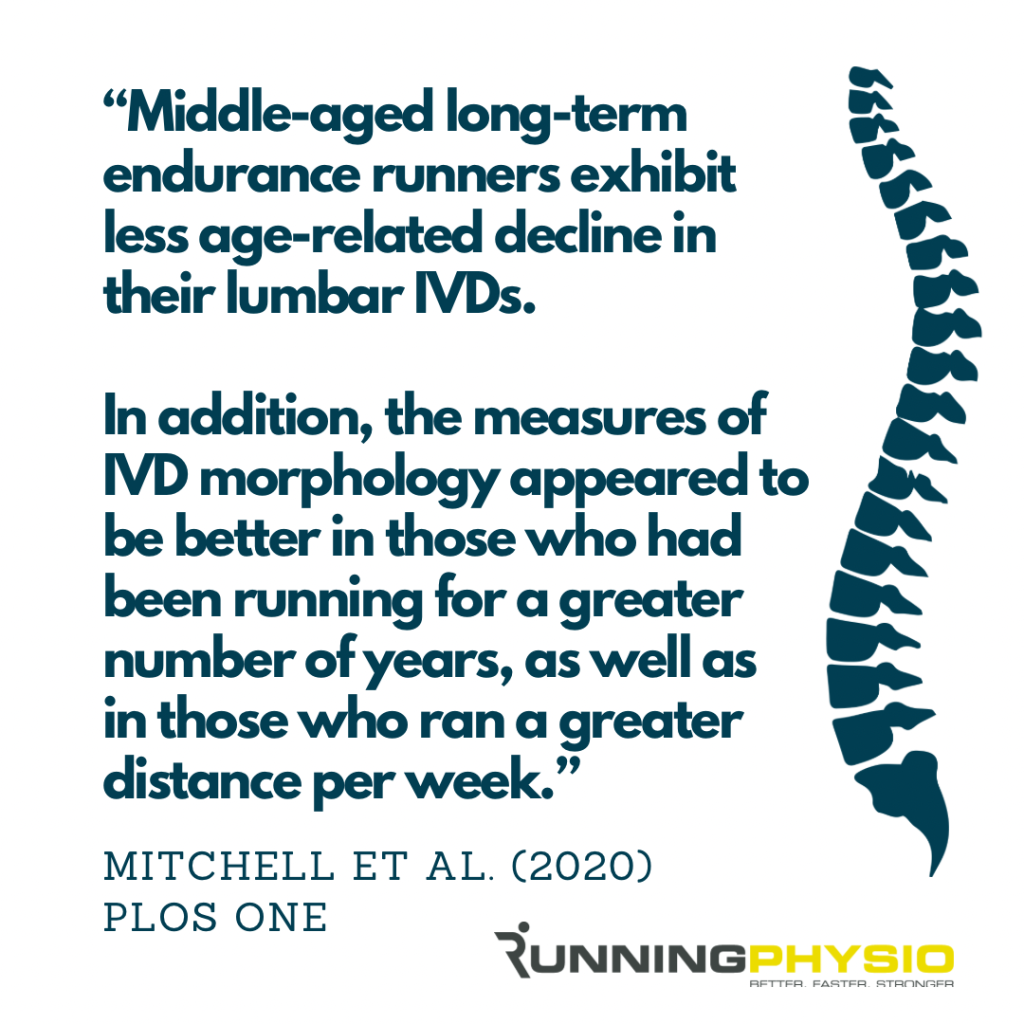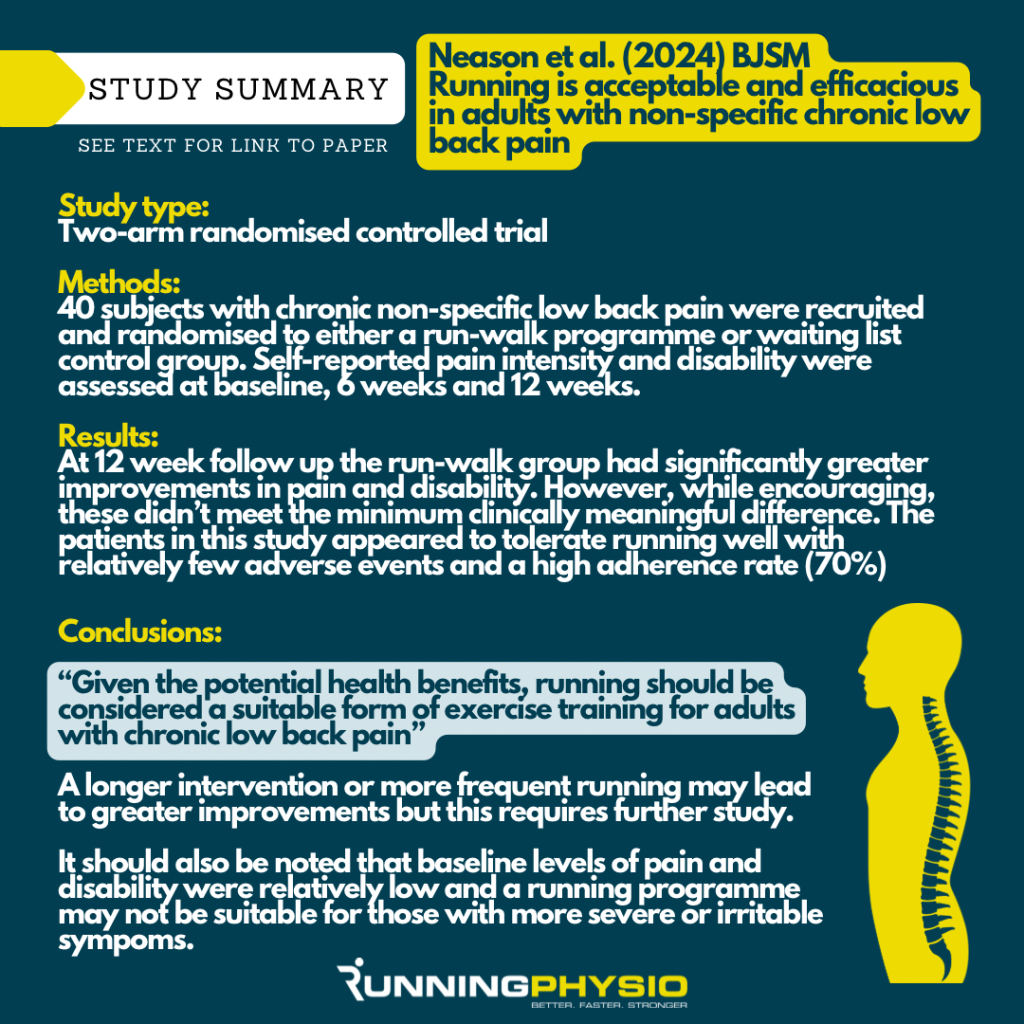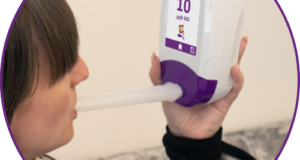Our articles are not designed to replace medical advice. If you have an injury we recommend seeing a qualified health professional. For more information see out Terms and Conditions.
Low back pain is now the leading cause of disability worldwide (Hartvigsen et al. 2018). It can have a long-lasting effect on people’s lives, mental well-being and goal activities.
For many years avoidance of exercise was suggested. I qualified at a time when bed rest was still recommended! Spines were considered fragile and running was thought to be damaging.
Fortunately thinking has evolved and research has far more encouraging findings including 3 key points that we’ll expand on in this post:
- Pain-free pathology is common and doesn’t usually worsen with running
- Running can improve spine health
- A run-walk programme can be effective in treating persistent low back pain
Let’s start by discussing ‘pathology’ in pain-free runners. I use the quotation marks there as there’s some debate over whether it is considered ‘pathology’ when there’s no pain. Horga et al. (2022) found that over 60% of asymptomatic runners had disc degeneration on MRI and these findings didn’t worsen despite training for and completing a marathon:

Maselli et al. (2020) reported that the prevalence of LBP may be lower in runners compared to the general population. Belavy et al. (2017) found that running may actually strengthen the intervertebral discs (IVD) of the lumbar spine, a finding supported by Mitchell et al. (2020) who reported better spine health in runners compared to non-runners:

These are positive findings that running may be beneficial rather than harmful for the spine but can it actually treat low back pain? A new study has tested this with a randomised controlled trial (Neason et al. 2024). Here’s a summary of their research:

Important exclusion criteria
The authors mention that participants in this study tended to have relatively low levels of pain and disability at baseline. They also excluded those with symptomatic radiculopathy or signs of cauda equina syndrome. See the paper for a full list of exclusion and inclusion criteria.
Running may not be suitable for patients with severe, irritable symptoms, especially if associated with being in more extended, upright positions or impact.
Return to run testing
A test run of up to 2 minutes was used to help determine the starting point of the run-walk programme. I like this approach and it’s something I would use clinically:
“Participants who could jog comfortably for (a) 0-44s started at stage one of the programme; (b) 45-89s started at stage two of the programme and (c) 90-120s started at stage three of the programme.” Neason et al. (2024)
This is similar to our return to run testing in Running Repairs Online where we suggest a short test run to assess response and guide progression.
Run-walk programme
I’d recommend reading the paper in full and in particular looking into the run-walk programme as it’s a nice example of a graded plan that gradually replaces walking with running and gives the patient control of their progression.
Note the start and end points of the programme – stage 1 begins with 15 secs of running and 120 secs of walking repeated 6 to 10 times and done 3 times per week. On average this meant total running distance began at 1.1km in week 1 and increased to 2.7km by week 12. However, within this was significant individual variation.
The key point here is to be realistic with where to start and how much someone will be able to progress in 12 weeks, especially if they have been unable to exercise for some time due to pain.
Limitations
Every study has limitations, in this one the fact that improvements didn’t exceed the minimum clinically meaningful difference is important to note. This may, in part, be due to the baseline symptoms. For example, current pain measured by visual analogue scale (VAS) was 30.80 on average at baseline, it reduced to an average of 14.25 at 12 weeks. This didn’t reach the 20 point reduction that would be considered clinically meaningful despite the fact that pain score has actually halved.
The intervention group also received optional warm up exercises and more regular contact with health professionals that the control group which may have influenced result.
Clinical takeaway
The current evidence suggests running is not harmful for the back and may improve spine health and help symptoms and disability associated with non-specific low back pain. However, it’s unlikely to be suitable for everyone or every pathology so I tend to use 3 criteria for guidance on when to suggest running for non-specific low back pain:
- The patient wants to run and is happy to use it as a treatment strategy
- Symptoms are mild to moderate and they can manage a short test run (e.g. 2 mins) with minimal pain
- There are no contraindications such as cauda equina syndrome or severe, irritable symptoms that are likely to worsen with running





